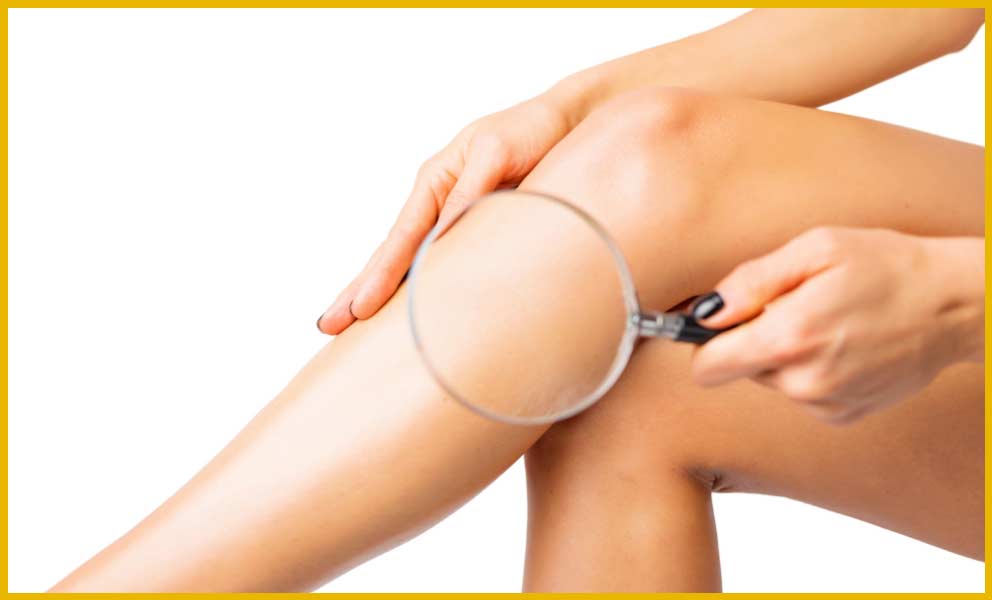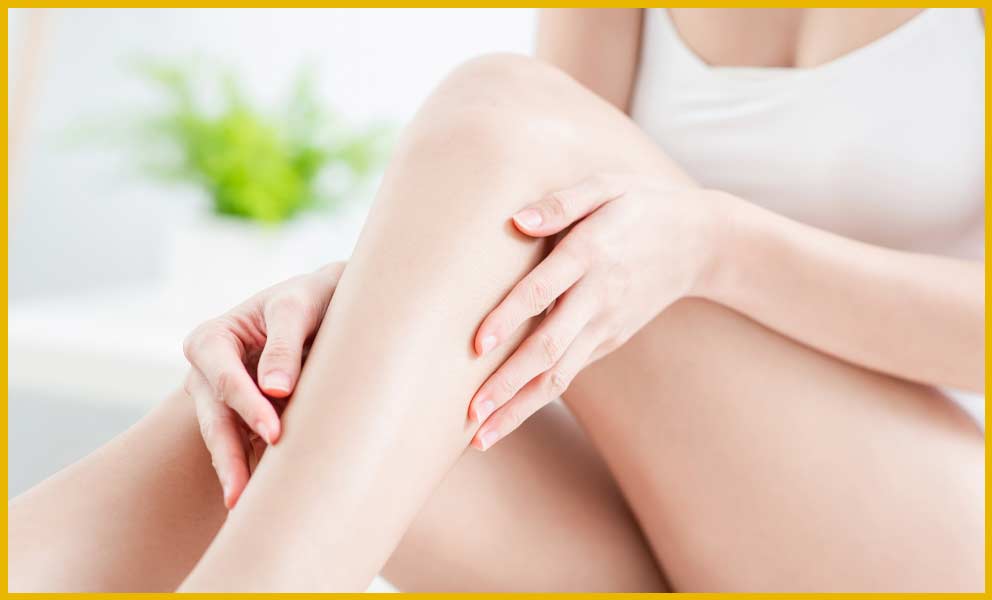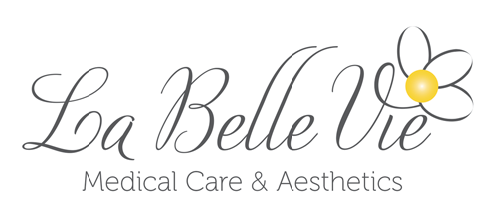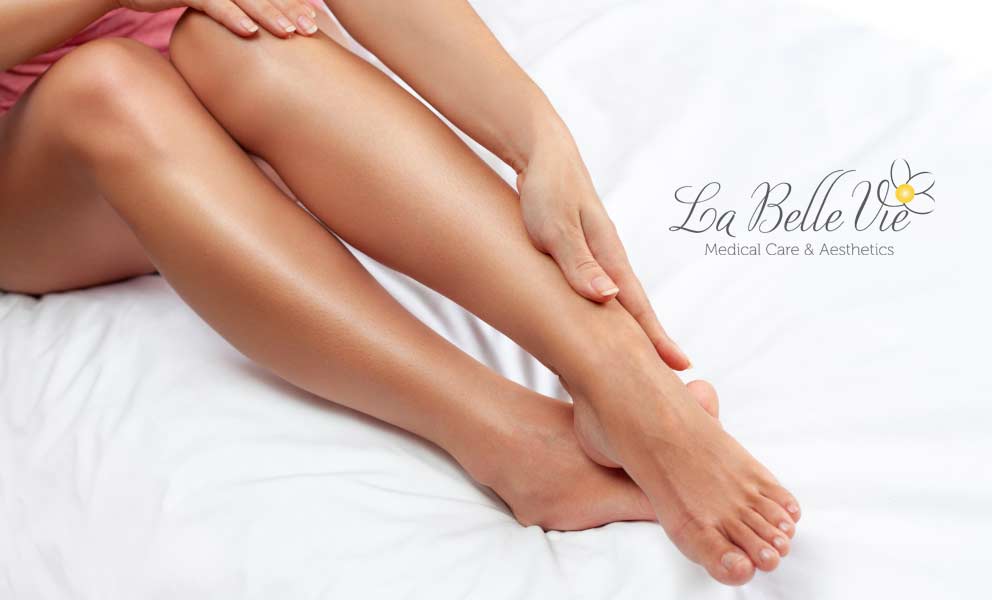Sclerotherapy stands as the gold standard in the realm of treating spider and reticular veins. Since its inception over a century ago, this time-tested procedure has evolved into a cornerstone of vascular therapy, offering patients a safe and effective means to address these common cosmetic concerns.
In this post, La Belle Vie Medical Care & Aesthetics in Draper, Utah explains how sclerotherapy works, outlines the process, looks at downtime, and examines the science.
How it Works
Sclerotherapy works by targeting and collapsing the small, dilated blood vessels near the surface of the skin known as spider veins. During the procedure, a sclerosing solution, typically a saline solution mixed with a sclerosant agent (such as sodium tetradecyl sulfate or polidocanol), is injected directly into the affected veins using a fine needle. The sclerosant irritates the inner lining of the blood vessels, causing them to swell and stick together. This process, known as sclerosis, ultimately leads to the closure of the treated veins. Once the veins are closed off, blood is rerouted through healthier veins, and the collapsed spider veins are gradually reabsorbed by the body’s natural healing processes.
Over time, the once-collapsed spider veins gracefully vanish, unveiling skin that is smoother and more radiant in the treated region. The complete transformation brought about by sclerotherapy may unfold gradually over several weeks to months, as the body naturally dismantles and eliminates the targeted veins. Depending on the severity of the spider veins and how each individual responds to treatment, multiple sessions of sclerotherapy may be required to attain the best possible outcome.

The Procedure
Initial Consultation: The process usually begins with an initial consultation at a medical spa like La Belle Vie Medical Care & Aesthetics. During this consultation, the provider evaluates the patient’s medical history and examines the spider veins to determine if they are suitable candidates for sclerotherapy.
Preparation: On the day of the procedure, the patient may be advised to wear loose-fitting clothing and avoid applying lotion or moisturizer to the legs. The area to be treated is cleaned thoroughly to remove any dirt or oils.
Injection: The healthcare provider injects a sclerosing solution directly into the affected spider veins using a very fine needle. The solution irritates the lining of the blood vessel, causing it to collapse and stick together. This process is repeated for each spider vein being treated.
Compression: After the injections, the provider may apply compression bandages or stockings to the treated area. Compression helps to compress the treated veins, reducing the risk of blood clots and improving the effectiveness of the treatment.
Post-Procedure Care: Patients are usually advised to avoid strenuous activities and prolonged standing or sitting for a few days after the procedure. They may also be instructed to wear compression garments for a certain period to promote healing and reduce swelling.
Follow-Up: Follow-up appointments may be scheduled to monitor the progress of the treatment and determine if additional sessions are needed. In some cases, multiple sessions may be required to achieve the desired results. Following post-procedure instructions from the healthcare provider is vital for a smooth recovery and optimal treatment results.
Results: Over time, the treated spider veins fade and are absorbed by the body, resulting in smoother and clearer skin. The full results of sclerotherapy may take several weeks to months to become apparent, depending on the extent of the vein damage and the individual’s healing process.
Downtime
After a sclerotherapy procedure, patients typically experience minimal downtime. While some individuals may resume their normal activities immediately after treatment, others may be advised to avoid strenuous exercise, prolonged standing or sitting, and exposure to direct sunlight for a brief period. Compression garments or bandages may be recommended to promote healing and reduce swelling. Patients may also notice temporary side effects such as bruising, swelling, or slight discomfort at the injection sites, but these usually resolve within a few days to weeks.
Again, it is essential for patients to follow post-procedure instructions provided by their healthcare provider to ensure a smooth recovery and optimal results from the treatment.
The Science
Numerous scientific studies and publications provide compelling evidence regarding the efficacy and safety of sclerotherapy. Here are their findings:
1989 – Sclerotherapy has a high success rate and low incidence of long-term adverse sequelae, with experience, meticulous technique, and good patient rapport being key to its success. https://onlinelibrary.wiley.com/doi/10.1111/j.1524-4725.1989.tb03028.x
1992 – Sclerotherapy is a nonsurgical procedure that effectively treats varicose and telangiectatic veins in the lower extremities, offering a cost-effective alternative to traditional surgical vein stripping. https://pubmed.ncbi.nlm.nih.gov/1514476/
1993 – Sclerotherapy is a relatively simple procedure that can easily be added to an existing dermatologic practice, with minimal training and equipment requirements. https://pubmed.ncbi.nlm.nih.gov/8512795/
2002 – Sclerotherapy is a safe and effective treatment for spider veins, reticular, and short saphenous varicose veins, with minimal risk and side effects when performed by experts.
https://pubmed.ncbi.nlm.nih.gov/12515979/
2011 – Sclerotherapy remains the gold standard for treating spider and reticular veins, with better sclerosing agents and newer techniques making it safer and more effective than ever before.
https://www.plasticsurgery.theclinics.com/article/S0094-1298(11)00007-1/fulltext
2017 – Sclerotherapy is a low-risk, highly successful method for treating telangiectasias and spider veins, with standard care and follow-up after the procedure.
https://www.jvsvenous.org/article/S2213-333X(17)30078-1/fulltext

Combining Sclerotherapy for Maximum Results
Sclerotherapy is often combined with other medical spa treatments to address various cosmetic concerns comprehensively. Some common treatments paired with sclerotherapy include:
Chemical Peels
Chemical peels help improve skin texture, tone, and clarity by exfoliating the outer layer of skin. Combining sclerotherapy with a chemical peel can provide a more holistic approach to treating both vascular and surface skin imperfections.
Dermal Fillers
Dermal fillers are used to add volume and reduce the appearance of wrinkles, lines, and folds. Pairing dermal fillers with sclerotherapy can address both vascular issues and signs of aging, providing comprehensive facial rejuvenation.
Skin Tightening Treatments
Procedures like Profound Skin Tightening can improve skin laxity and firmness. Combining these treatments with sclerotherapy can help achieve a more youthful and toned appearance.
Microneedling for Stretch Marks
Microneedling for stretch marks involves creating controlled micro-injuries in the skin. This stimulates collagen and elastin production, which can improve the appearance of stretch marks over time.
Closing Thoughts
La Belle Vie’s skilled professionals specialize in the art of sclerotherapy, offering you a path to liberate your skin from the grasp of spider veins. Don’t let these unwelcome guests mar your confidence any longer. Take the first step towards radiant, vein-free skin by reaching out to us today for a personalized consultation. Discover the unparalleled expertise and care awaiting you at La Belle Vie Medical Care and Aesthetics in Draper, Utah.
*It is important to note that while sclerotherapy is generally considered safe and effective, it may not be suitable for everyone. Patients with certain medical conditions or allergies to the sclerosing solution may not be candidates for this procedure. Additionally, sclerotherapy may cause temporary side effects such as bruising, swelling, or skin discoloration, but these usually resolve on their own.






